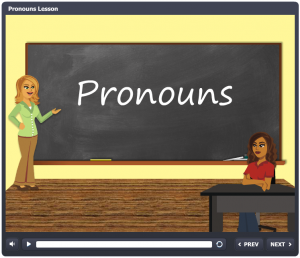Pronoun Agreement and the Singular They

Pronouns, whether we want to admit it or not, seem to give us a lot of trouble. I find this to be especially true because, in English, we do not have a gender-neutral, singular, third-person personal pronoun. OK, so what does that mean?
In English, we have two singular personal pronouns in the third person—he and she. This limits us in a couple of critical ways. First, having only these gender-specific pronouns means that we do not have a pronoun to refer to people who do not identify with either gender or people who identify as both. Second, when we have a singular noun with no specific gender in mind, we have no pronoun that agrees in number with the noun.
So, what do we do? In the past, style guides and grammar handbooks have suggested using “he or she” or “she or he” or “he/she” or “she/he” as options here. But there are a couple of problems with this option. This solution does not address the need for a pronoun to refer to people who are gender neutral or who identify as both genders, and using “he or she” always feels clunky for some people.
So, again, what do we do? We tried making up new pronouns to fill this gap in our language, such as the pronoun “ze,” but, so far, these new pronouns have not “stuck” and made it into mainstream grammar and usage.
We have found a solution, it seems, and the solution goes back much further than most people might think. However, before I discuss this solution, I want to share some important context first.
All living languages change. The only thing you can count on, in terms of consistency, is that our language is going to change. Change can be difficult for some people, but it is the reality of our language. We can fight it or accept it, but it’s going to happen one way or another. Right now, we’re clearly witnessing a change in the “rules,” and it’s really pretty exciting.
The change that is happening (or, according to some people, has already happened) is that it’s now acceptable to use the pronoun “they,” which is technically a plural pronoun, as a singular pronoun. We call this the “singular they.”
People are using “they” as a singular pronoun to refer to people who do not identify as one gender or another, and people are using it as a singular pronoun when the noun they are referring to refers to a person in where no gender is identified or can be identified. Here is an example:
When my student asked for help on the research project, they identified three areas where they needed the most help.
In the recent past, this would have been considered “incorrect.” Instead of “they,” we would have needed to write “he or she” or “he/she.” But language changes. Apparently, the “singular they” used to be correct, but, then, it became incorrect because language changes. It just does, whether we like it or not, and this rule seems to be one that is changing rather quickly.
Of course, you may be wondering when and if you should use the singular they. If you’re a college student, I recommend checking with your professor. You may also share the link to this blog. If you are writing for publication, the publication you’re writing for will have style guidelines. You can check them out or check with your editor.
The key thing to know is that we’re in the middle of a big change on this, and some in the field feel we have already made the change.
Here’s some further reading on the topic:
“2015 Word of the Year Is Singular ‘They’”
“Singular They” from Wikipedia
Be sure to tell us what you think? Are you ready for the change? Why or why not?
